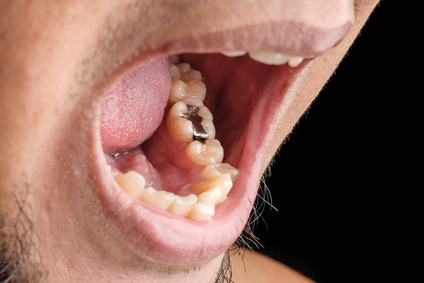Bio-Resonance Therapy for Dental Conditions and Amalgam Removal
A growing number of dental practices around the world are using BICOM® Bioresonance as an alternative to antibiotics following surgery, it is also used prior to and following amalgam removal.
The need for dental treatment
Having a fear of visiting the dentist is fairly common, even among adults. However, going to see the dentist regularly is important to support our dental health and make sure that we are practicing proper oral hygiene. These visits can also help to spot health problems such as gum disease early and to address any issues with the wisdom teeth before they cause pain and impact on other teeth.
At times, dental treatment may be needed to replace missing teeth or to repair those damaged by tooth decay. This can help to prevent further decay from occurring and prevent an infection from developing. Having this treatment can make a great difference in the life of a patient, as they may be able to eat and smile more freely. The process of installing a filling involves removing decayed areas of tooth and cleaning the remaining areas before adding the fillings on top of natural teeth.
Why are amalgam fillings used?
The filling material used may vary depending on the extent of the dental damage, the location of the damage and on how much the material costs. Some of the options that may be used include gold, composite resins, glass ionomer and silver fillings.
Silver fillings are made from dental amalgam, which means that as well as silver, they contain a combination of metals including mercury, copper, tin and zinc. This type of filling is not very natural in colour so it is more likely to be used for the back teeth rather than the front teeth. The advantage of an amalgam filling is that this material is fairly durable and is less expensive than some of the other options available.

A patient with an amalgam filling
Is dental amalgam safe?
While dental amalgam fillings are generally considered to be safe, the mercury found in an amalgam filling may have neurotoxic effects on very young children. Therefore to reduce this risk, it is often recommended that other materials are used in the dental care of those under 6 years of age, as well as other high risk groups such as pregnant women.
What are the possible side effects?
At times some other patients also experience adverse health effects after getting a filling. Pain and sensitivity are relatively common following the addition of a new filling. That said, these effects may simply wear off without the need for other treatments. If the pain is severe or lasts for several weeks, it may be necessary to go back to the dentist to have the situation medically reviewed. After a filling has been in place for a long time, the materials that have been used begin to break down with regular wear and tear. This can bring the risk of further decay and damage to the tooth, which, if left untreated, could result in an infection.
Amalgam fillings can slowly release very small amounts of metal in the form of a mercury vapour. It is possible for this vapour to then be inhaled by the person and to enter the lungs. Large amounts of mercury exposure are known to contribute towards damage to certain organs such as the brain. As a result, some have come to the conclusion that there may be a connection between the mercury contained in amalgam and certain neurodegenerative conditions. Although, there isn’t currently enough clinical data to back up this conclusion.
Amalgam allergy
More serious initial symptoms may be caused by an allergic reaction as a result of mercury exposure. Those with a history of allergic conditions may be among those at an increased risk of having adverse effects. When unpleasant symptoms persist, a person may decide that it would be best to have the amalgam material removed.
How may bioresonance provide support?
While many factors may be involved in the development of a health condition, some patients have benefitted hugely from having amalgam removed. Bioresonance therapy can be used safely alongside conventional treatment options and may be utilised to support the patient before and after the removal process.
In one example, a lady had been suffering from migraine attacks for years. Amalgam fillings which had been present for over 20 years were removed. After additional bioresonance therapy, her migraine attacks disappeared completely.


